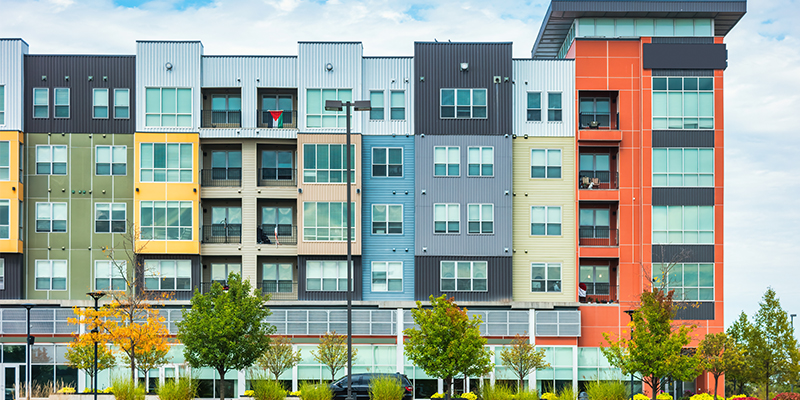Colorado legislators are poised to introduce what is being referred to by proponents as the “Energy Performance in Buildings Act of 2021.” The draft bill, which mandates energy benchmarking and performance standards, requires owners of most commercial, multifamily and public buildings over 50,000 square feet to collect and report the building’s energy use to the Colorado Energy Office (CEO). The building will then be given an Energy Star score compared to other buildings. By 2026, owners of buildings that do not meet a certain score must make improvements that lead to a 15-point Energy Star score increase, a 15% energy use intensity reduction, or other options. Failure to reach energy reduction mandates will result in hefty civil penalties for commercial and multifamily building owners. Buildings exempt from the penalty provision include buildings owned by the state, municipalities, counties, special districts, school districts and state institutions of higher education.
The primary proponents of this bill are the CEO, which is a non-regulatory department within the Governor’s office, and the Southwest Energy Efficiency Project (SWEEP). This proposed legislation was set in motion in 2019 when lawmakers established a regulatory process to cut Colorado’s greenhouse gas emission by half before 2030 and by 90% by 2050. Governor Jared Polis announced policy recommendations with the release of the Colorado Greenhouse Gas Pollution Reduction Roadmap in January of this year. The roadmap suggests that benchmarking is a useful tool to identify areas of opportunity for demand reduction and electrification. However, it also identifies the challenges of setting reduction targets without sufficient data and an understanding of how buildings are performing currently.
According to a new study from the Common Sense Institute (CSI), insufficient data exist to accurately project the economy-wide costs and consequences of the draft bill’s performance standards. In a survey of commercial building owners conducted by CSI and the Colorado Real Estate Alliance in late February, 45% of respondents indicated they either cannot meet or are unsure if they can meet any of the performance targets prescribed by the building benchmarking draft legislation. Reasons range from the high cost of mandates to practical implementation. Some tenants control their own energy usage and may not care to assist with their buildings’ compliance.
Also troubling is the fact that the mandates may actually increase greenhouse emissions. In 2019, Colorado’s electric utilities emitted far more carbon dioxide equivalent than the average of residential, commercial, and industrial buildings for each equivalent unit of energy they generated. Until Colorado’s electric grid becomes clean enough, large-scale building electrification would actually increase the state’s total emissions.
As building owners grapple with the ongoing impacts of COVID-19, it is essential to ensure that new mandates don’t impose undue cost burdens, especially for owners of commercial buildings with significantly reduced occupancy resulting in a dramatic decrease in revenue. 2021 should be a year of recovery and rebuilding. This benchmarking and performance standard legislation absolutely will not help achieve that goal. The unintended consequences of the Energy Performance in Buildings Act of 2021 would place potentially unbearable burdens on an already struggling industry.








